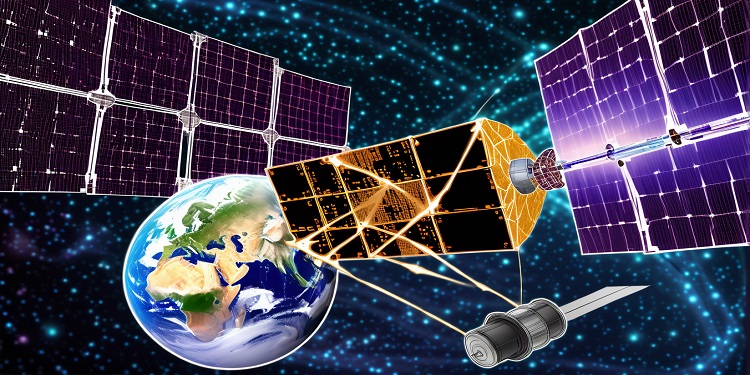A team of computer scientists from New York University has introduced a blockchain system that surpasses existing performance benchmarks by handling over five million transactions every two seconds. This achievement makes it nearly 100 times faster than leading blockchain networks while consuming significantly less energy.
The newly developed system, Bounce, diverges from conventional blockchain architectures by leveraging satellites to maintain the integrity and sequence of transactions. This innovation enhances processing speed while mitigating security risks commonly associated with traditional blockchain networks.
Satellite Technology Enhancing Blockchain Efficiency
The research team emphasized that using satellites provides a crucial advantage, as they are inherently difficult to access and resilient against cyber threats. The ability to maintain tamper-resistant processing further strengthens the security of the Bounce system.
Within this framework, transactions are encoded and transmitted to a designated satellite within predefined time intervals. The satellite processes these transactions in sequence and transmits them back to Earth, ensuring an unambiguous order of transactions. This method effectively eliminates the risk of blockchain forks, a phenomenon that can lead to double-spending vulnerabilities.
The project was carried out with contributions from undergraduate researchers and former graduate students, who conducted experiments using CloudLab infrastructure. The satellite communication times used in the study were based on real-world tests conducted with the International Space Station.
Unmatched Speed and Energy Efficiency
One of Bounce’s distinguishing features is its remarkable efficiency. The system operates at an energy consumption rate of under 0.05 joules per transaction, a stark contrast to the more than 1,000 joules required by Solana, a widely recognized high-speed blockchain. In comparison, Bitcoin transactions consume over a million joules, highlighting the vast energy savings Bounce offers.
Blockchain technology has long faced challenges related to slow transaction processing speeds and high energy requirements. While Bitcoin popularized blockchain in 2009, most modern implementations continue to struggle with these limitations, hindering widespread adoption.
The Bounce protocol is designed to be highly secure, with its core functions embedded into read-only memory. This design choice eliminates the risk of software-injection attacks, a common cybersecurity threat to traditional blockchain platforms.
Faster Confirmations and Tiered Transaction Services
For end users, Bounce offers transaction confirmation speeds ranging from three to ten seconds, aligning closely with the response times of conventional credit card networks. Additionally, the researchers have introduced a two-tier transaction model, where premium transactions receive prioritized processing over standard ones.
Beyond performance improvements, the use of satellites inherently strengthens security measures against hacking attempts. Operating at hundreds of kilometers above Earth, satellites present significant physical barriers to unauthorized access. Their capability to broadcast transaction data globally further enhances protection against potential communication disruptions.
Future Implications and Industry Adoption
The study received support from NYU Wireless, an academic research initiative at NYU’s Tandon School of Engineering dedicated to advancing wireless communication technologies. Researchers acknowledged that practical implementation challenges may arise, but they consider Bounce a foundational step toward developing high-performance, energy-efficient, and universally accessible blockchain networks.
As blockchain developers continue searching for solutions to scalability and efficiency issues, the introduction of a satellite-powered transaction system could mark a turning point. If successfully adopted, this innovation has the potential to redefine how distributed ledger technology operates in financial and commercial applications worldwide.

